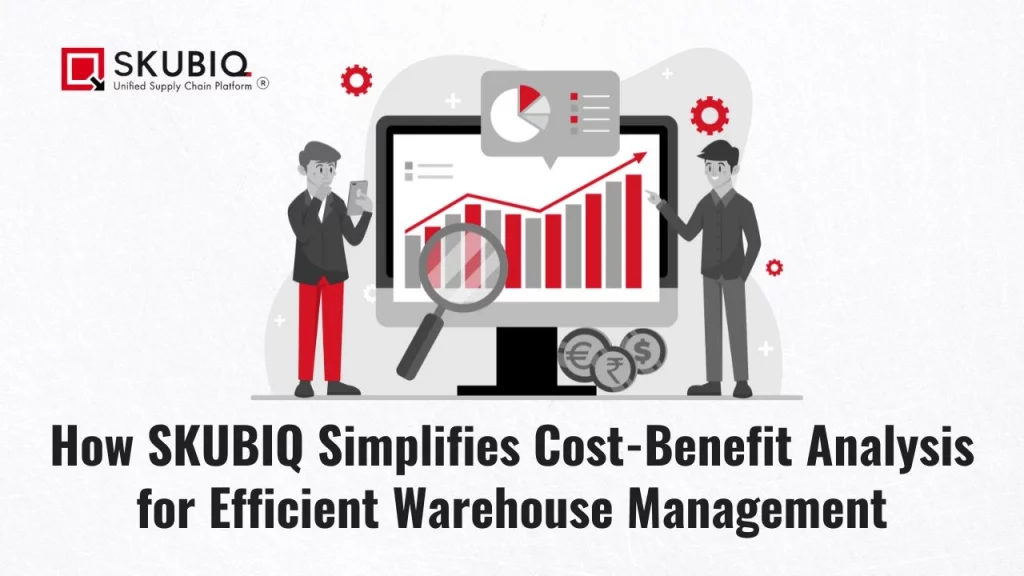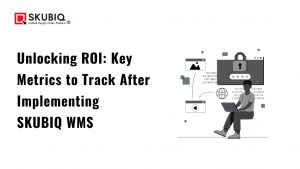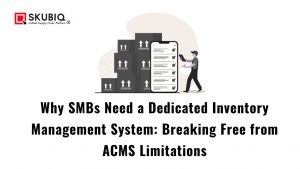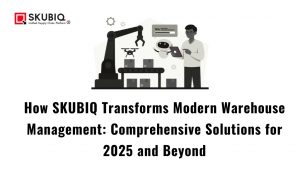In today’s highly competitive business environment, efficient warehouse management is crucial for any organization that deals with physical products. The ability to store, manage, and ship goods effectively can make or break a company’s bottom line. However, achieving this efficiency isn’t always straightforward. One of the key challenges is conducting a cost-benefit analysis that helps businesses make informed decisions about their warehouse operations.
SKUBIQ, a leading gestão de armazém software, is designed to simplify this complex process, making it easier for companies to understand where they can save money and how to maximize their return on investment (ROI). In this article, we’ll explore how SKUBIQ streamlines cost-benefit analysis to enhance warehouse efficiency and profitability.
Understanding the Importance of Cost-Benefit Analysis in Warehouse Management
Cost-benefit analysis is a systematic approach to evaluating the financial implications of a decision, comparing the costs involved with the expected benefits. In warehouse management, this could include evaluating whether to invest in new technology, expand storage capacity, or optimize existing processes.
The goal is to identify options that offer the highest return on investment while minimizing risks. Without a thorough cost-benefit analysis, businesses might overspend on solutions that don’t deliver sufficient value, or worse, miss out on opportunities to improve efficiency.
To mitigate this risk, businesses should develop relationships with multiple suppliers across different geographic regions. This diversification allows companies to shift production or sourcing to alternative suppliers in the event of disruption, minimizing the impact on operations. Additionally, consider collaborating with suppliers of different sizes to ensure flexibility and reduce dependence on a single entity.
Common Challenges in Warehouse Management
Before diving into how SKUBIQ simplifies cost-benefit analysis, it’s important to understand the challenges businesses face in managing warehouses:
- Inventory Management: Keeping track of stock levels, managing replenishments, and avoiding stockouts or overstock situations are critical but complex tasks.
- Space Utilization: Maximizing storage space while ensuring easy access to products can be a logistical nightmare.
- Labour Costs: Managing labour effectively to avoid overstaffing or understaffing while maintaining high productivity is a constant balancing act.
- Technology Integration: Implementing and integrating new technologies, such as automated picking systems or advanced inventory software, requires significant investment and training.
- Order Fulfillment: Ensuring that orders are processed and shipped accurately and on time is essential to maintaining customer satisfaction.
These challenges often require significant financial outlays, making cost-benefit analysis an essential tool for decision-making in warehouse management.
Moreover, predictive analytics can forecast potential disruptions by analyzing patterns and trends in historical data. For instance, by examining weather patterns, geopolitical developments, and market fluctuations, businesses can anticipate disruptions and develop contingency plans in advance.
How SKUBIQ Addresses Warehouse Management Challenges
SKUBIQ’s advanced features are designed to address the challenges mentioned above, helping businesses manage their warehouses more efficiently. Here’s how:
1. Real-Time Inventory Tracking
SKUBIQ provides real-time visibility into inventory levels, helping businesses track stock accurately. This reduces the risk of overstocking or understocking, ensuring that capital isn’t tied up in excess inventory or lost due to stockouts.
2. Optimized Space Utilization
The software’s intelligent algorithms analyze the layout and storage patterns of the warehouse, suggesting ways to optimize space. This can include reconfiguring shelves, redistributing inventory, or implementing better organization strategies to maximize the use of available space.
3. Labor Management Tools
SKUBIQ offers tools to schedule and manage labour more effectively. By analyzing historical data and current demand, the software can suggest optimal staffing levels to ensure productivity while minimizing labour costs.
4. Seamless Technology Integration
SKUBIQ is designed to integrate seamlessly with other technologies, such as ERP systems, automated picking systems, and shipping software. This ensures that data flows smoothly across platforms, reducing errors and improving efficiency.
5. Enhanced Order Fulfillment
With SKUBIQ, businesses can automate many aspects of order fulfilment, from picking and packing to shipping. This not only speeds up the process but also reduces errors, ensuring that customers receive their orders on time and in perfect condition.
Conducting Cost-Benefit Analysis with SKUBIQ
SKUBIQ simplifies the cost-benefit analysis process in several key ways:
1. Comprehensive Data Collection
One of the biggest challenges in conducting a cost-benefit analysis is gathering accurate data. SKUBIQ automates data collection across various aspects of warehouse management, from inventory levels to labour costs and order fulfilment times. This comprehensive data collection ensures that businesses have all the information they need to make informed decisions.
2. Detailed Reporting and Analytics
SKUBIQ’s reporting and analytics tools allow businesses to analyze data in detail. The software can generate reports that highlight key metrics, such as cost per order, inventory turnover, and labor productivity. These reports are essential for conducting a thorough cost-benefit analysis.
3. Scenario Planning
SKUBIQ’s scenario planning feature enables businesses to model different strategies and their potential outcomes. For example, a business can simulate the impact of investing in new automation technology or reconfiguring the warehouse layout. By comparing the costs and benefits of each scenario, businesses can make decisions that offer the best ROI.
4. ROI Calculation
SKUBIQ simplifies ROI calculation by automatically comparing the costs associated with different strategies against the expected benefits. This allows businesses to quickly identify which investments are likely to deliver the highest returns.
5. Real-Time Decision Making
With SKUBIQ, businesses can conduct cost-benefit analyses in real time. As conditions change, such as fluctuations in demand or labor availability, the software updates its recommendations accordingly. This ensures that businesses can make decisions based on the most current data, maximizing efficiency and profitability.
The Benefits of Using SKUBIQ for Cost-Benefit Analysis
The benefits of using SKUBIQ for cost-benefit analysis in warehouse management are numerous:
- Improved Accuracy: By automating data collection and analysis, SKUBIQ reduces the risk of human error, ensuring that cost-benefit analyses are more accurate.
- Time Savings: SKUBIQ speeds up the cost-benefit analysis process, allowing businesses to make decisions faster.
- Increased Flexibility: With SKUBIQ, businesses can quickly adapt to changing conditions, conducting new analyses as needed.
- Better Decision-Making: The detailed reports and scenario planning tools provided by SKUBIQ enable businesses to make more informed decisions, leading to better outcomes.
- Higher ROI: By identifying the strategies that offer the highest return on investment, SKUBIQ helps businesses maximize their profitability.
Case Studies: SKUBIQ in Action
To illustrate the effectiveness of SKUBIQ in simplifying cost-benefit analysis, let’s look at a couple of real-world examples:
Case Study 1: Reducing Labor Costs
A mid-sized retailer was struggling with high labor costs in their warehouse. By using SKUBIQ, they were able to analyze their labor data and identify inefficiencies. SKUBIQ recommended changes to their staffing levels and shifts, resulting in a 15% reduction in labor costs without sacrificing productivity.
Case Study 2: Optimizing Space Utilization
A logistics company was facing space constraints in their warehouse, leading to inefficiencies in order fulfillment. SKUBIQ analyzed the warehouse layout and suggested reconfigurations that increased storage capacity by 20%. This not only improved order fulfillment times but also postponed the need for a costly warehouse expansion.
Conclusion
SKUBIQ is a powerful tool for any business looking to streamline its warehouse management through effective cost-benefit analysis. By automating data collection, providing detailed analytics, and enabling scenario planning, SKUBIQ simplifies the decision-making process, helping businesses identify the strategies that offer the highest ROI. Whether you’re looking to reduce costs, optimize space, or improve order fulfilment, SKUBIQ can help you achieve your goals and enhance the efficiency of your warehouse operations.
In today’s competitive marketplace, the ability to make informed decisions quickly is a key advantage. With SKUBIQ, you can be confident that your cost-benefit analyses are accurate, comprehensive, and tailored to the unique needs of your business.



